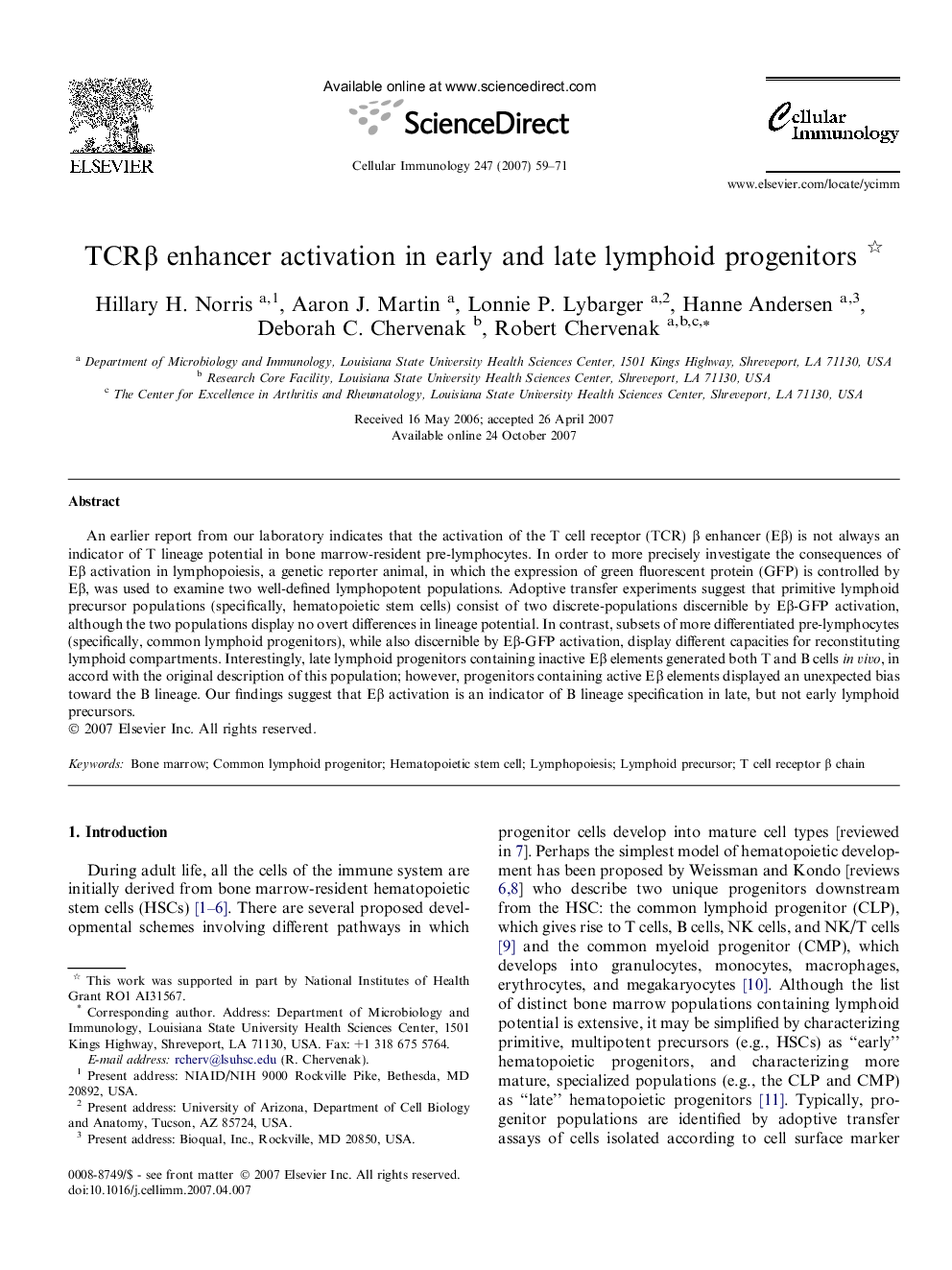| Article ID | Journal | Published Year | Pages | File Type |
|---|---|---|---|---|
| 2168012 | Cellular Immunology | 2007 | 13 Pages |
Abstract
An earlier report from our laboratory indicates that the activation of the T cell receptor (TCR) β enhancer (Eβ) is not always an indicator of T lineage potential in bone marrow-resident pre-lymphocytes. In order to more precisely investigate the consequences of Eβ activation in lymphopoiesis, a genetic reporter animal, in which the expression of green fluorescent protein (GFP) is controlled by Eβ, was used to examine two well-defined lymphopotent populations. Adoptive transfer experiments suggest that primitive lymphoid precursor populations (specifically, hematopoietic stem cells) consist of two discrete-populations discernible by Eβ-GFP activation, although the two populations display no overt differences in lineage potential. In contrast, subsets of more differentiated pre-lymphocytes (specifically, common lymphoid progenitors), while also discernible by Eβ-GFP activation, display different capacities for reconstituting lymphoid compartments. Interestingly, late lymphoid progenitors containing inactive Eβ elements generated both T and B cells in vivo, in accord with the original description of this population; however, progenitors containing active Eβ elements displayed an unexpected bias toward the B lineage. Our findings suggest that Eβ activation is an indicator of B lineage specification in late, but not early lymphoid precursors.
Related Topics
Life Sciences
Biochemistry, Genetics and Molecular Biology
Cell Biology
Authors
Hillary H. Norris, Aaron J. Martin, Lonnie P. Lybarger, Hanne Andersen, Deborah C. Chervenak, Robert Chervenak,
